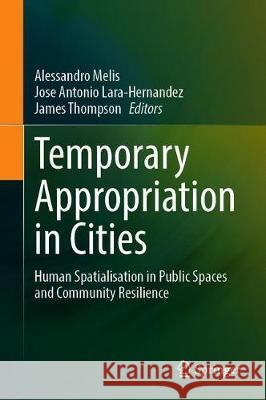Temporary Appropriation in Cities: Human Spatialisation in Public Spaces and Community Resilience » książka
topmenu
Temporary Appropriation in Cities: Human Spatialisation in Public Spaces and Community Resilience
ISBN-13: 9783030321192 / Angielski / Twarda / 2020 / 256 str.
Kategorie BISAC:
Wydawca:
Springer
Język:
Angielski
ISBN-13:
9783030321192
Rok wydania:
2020
Wydanie:
2020
Ilość stron:
256
Waga:
0.57 kg
Wymiary:
23.39 x 15.6 x 1.75
Oprawa:
Twarda
Wolumenów:
01
Dodatkowe informacje:
Wydanie ilustrowane











